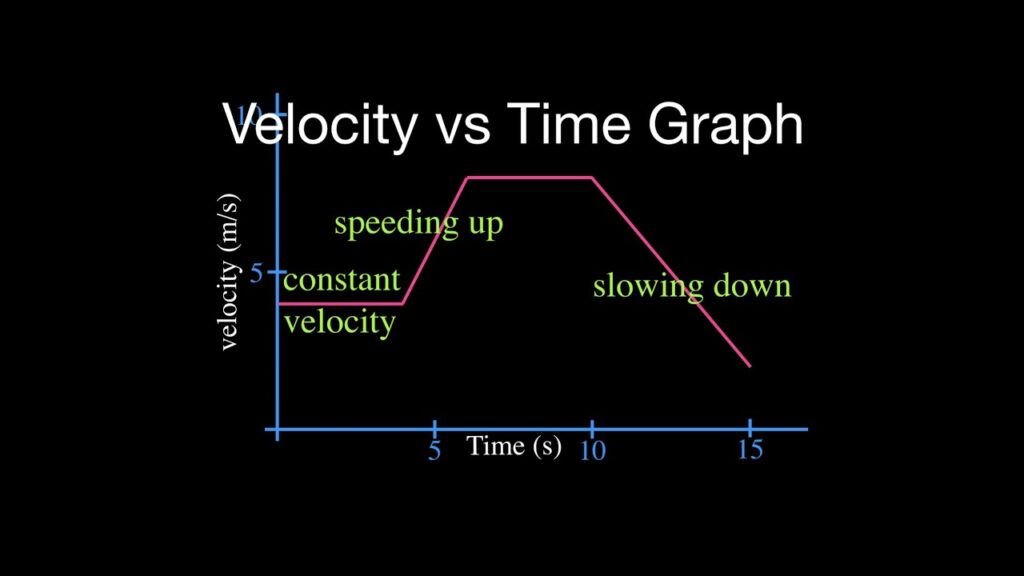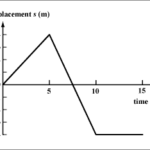Now how can one tell if the object is speeding up or slowing down? Speeding up means that the magnitude (or numerical value) of the velocity is getting large. For instance, an object with a velocity changing from +3 m/s to + 9 m/s is speeding up. Similarly, an object with a velocity changing from -3 m/s to -9 m/s is also speeding up. In each case, the magnitude of the velocity (the number itself, not the sign or direction) is increasing; the speed is getting bigger. Given this fact, one would believe that an object is speeding up if the line on a velocity-time graph is changing from near the 0-velocity point to a location further away from the 0-velocity point. That is, if the line is getting further away from the x-axis (the 0-velocity point), then the object is speeding up. And conversely, if the line is approaching the x-axis, then the object is slowing down.

Check Your Understanding
 1. Consider the graph at the right. The object whose motion is represented by this graph is … (include all that are true):
1. Consider the graph at the right. The object whose motion is represented by this graph is … (include all that are true):
1. moving in the positive direction.
2. moving with a constant velocity.
3. moving with a negative velocity.
4. slowing down.
5. changing directions.
6. speeding up.
7. moving with a positive acceleration.
8. moving with a constant acceleration.

Answers: a, d and h apply.
a: TRUE since the line is in the positive region of the graph.
b. FALSE since there is an acceleration (i.e., a changing velocity).
c. FALSE since a negative velocity would be a line in the negative region (i.e., below the horizontal axis).
d. TRUE since the line is approaching the 0-velocity level (the x-axis).
e. FALSE since the line never crosses the axis.
f. FALSE since the line is not moving away from x-axis.
g. FALSE since the line has a negative or downward slope.
h. TRUE since the line is straight (i.e, has a constant slope).


